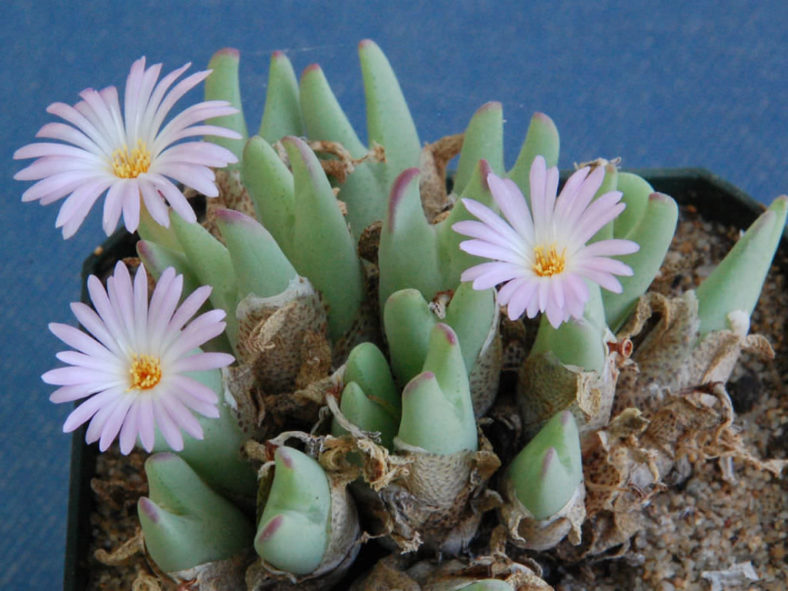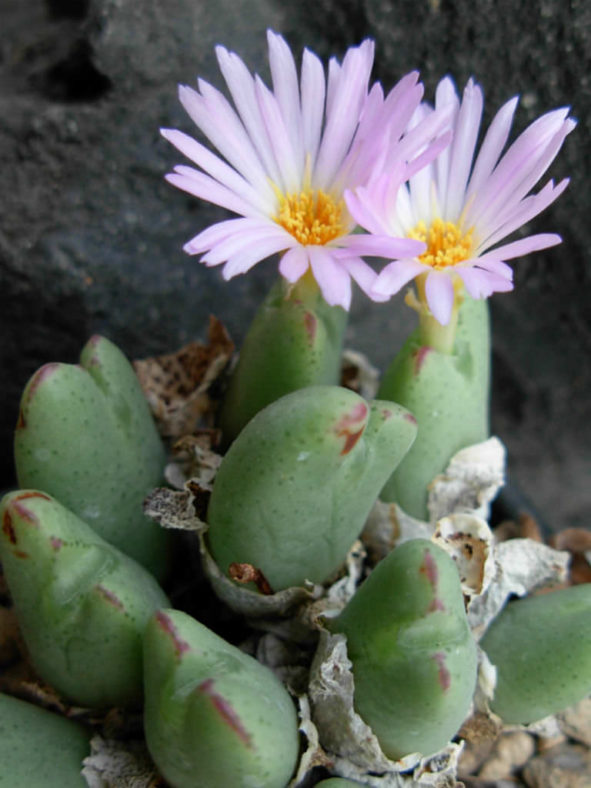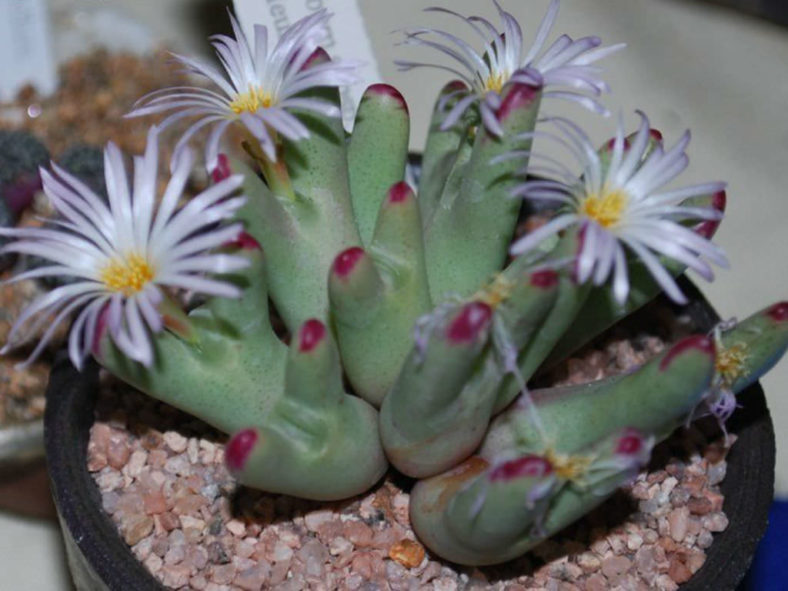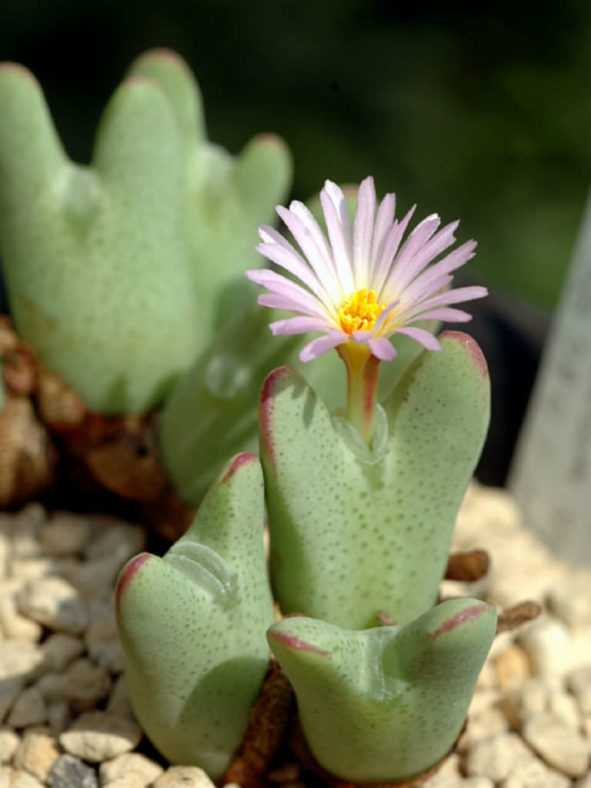Scientific Name
Conophytum bilobum subsp. gracilistylum (L.Bolus) S.A.Hammer
Synonym(s)
Conophytum gracilistylum, Derenbergia angeiformis, Derenbergia gracilistyla, Mesembryanthemum gracilistylum
Scientific Classification
Family: Aizoaceae
Subfamily: Ruschioideae
Tribe: Ruschieae
Genus: Conophytum
Origin
Conophytum bilobum subsp. gracilistylum is native to the western part of South Africa. It occurs in a small area northwest of Bitterfontein in the Western Cape.
Description
Conophytum bilobum subsp. gracilistylum is a dwarf succulent that forms a clump of stemless, two-lobed bodies composed of a pair of thick, fleshy, partially fused leaves. The slender bodies can grow up to 2.8 inches (7 cm) tall. They are glossy, pale green with fine darker spots, and often reddish at the lobe tips. The lobes can measure up to 0.4 inches (1 cm) long.
The flowers are diurnal, scentless, and pale pink to rose pink, appearing solitary in the fall. They can reach a diameter of 1.2 inches (3 cm) and are the largest in the genus.

Hardiness
USDA hardiness zones 10b to 11b: from 35 °F (+1.7 °C) to 50 °F (+10 °C).
How to Grow and Care
Most Conophytums need bright light but dislike intense sunlight. To avoid sunburn, place them in a position that receives a few hours of full sun during cooler parts of the day.
These plants thrive best in a porous growing medium that will drain quickly. Use a commercial succulent soil mix specially designed for growing succulents or make your own.
When Conophytums go dormant in the spring, they require little or no water. When plants begin growing in the fall, it's safe to water deeply, allowing the soil to dry out before watering again.
Conophytums are light feeders and do not need fertilizer if repotted every two years. It is best to feed at the beginning of the growth period and just before flowering.
These succulents will benefit from repotting. Depending on the pot's size and growth rate, they typically need to be repotted every 2 to 4 years. The best time to repot a Conophytum is at the beginning of the growing season.
Conophytums are easily propagated by division. They can also be grown from seeds.
Learn more at How to Grow and Care for Conophytum.
Links
- Back to genus Conophytum
- Succupedia: Browse succulents by Scientific Name, Common Name, Genus, Family, USDA Hardiness Zone, Origin, or cacti by Genus
Photo Gallery
Click on a photo to see a larger version.


